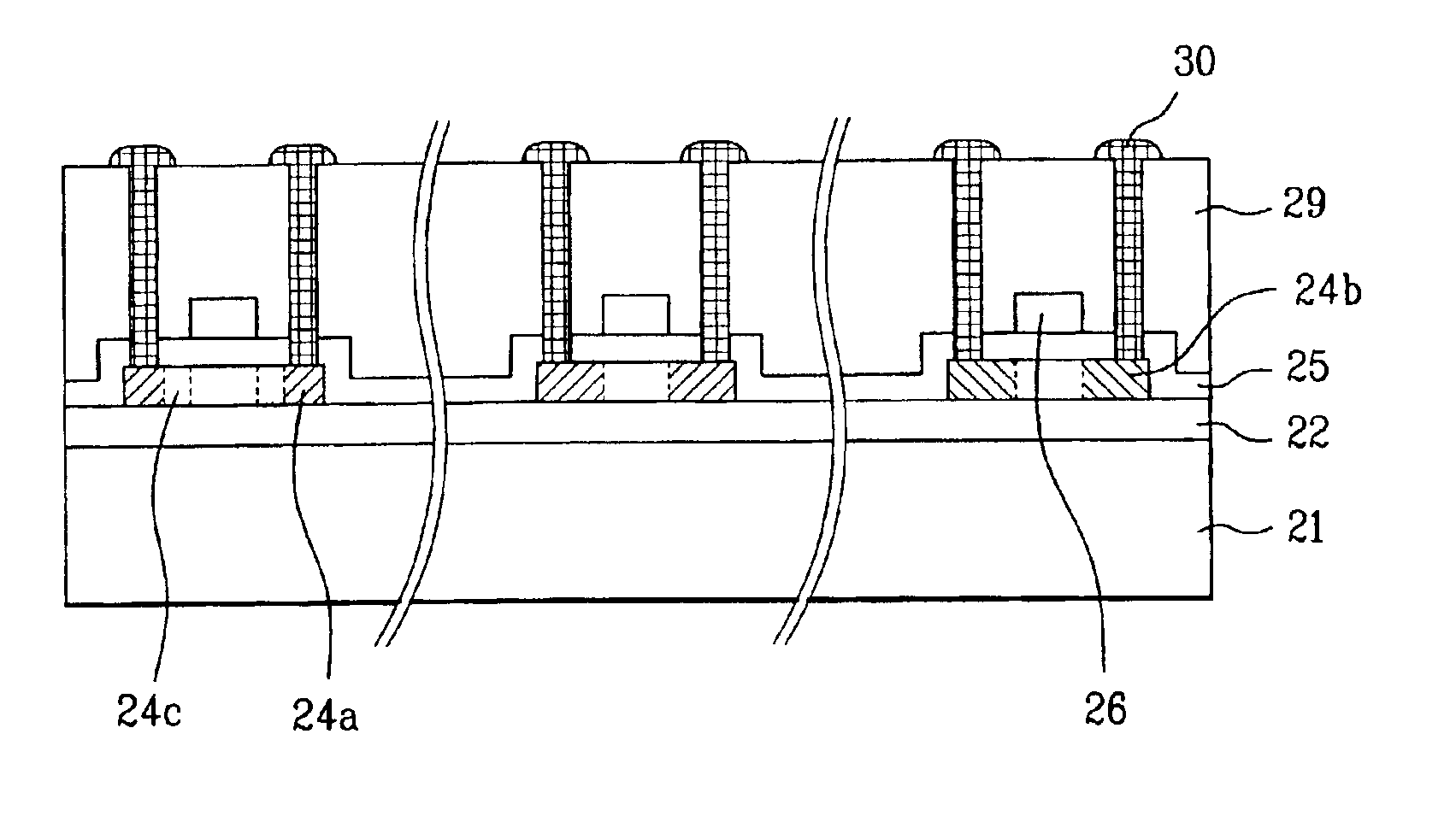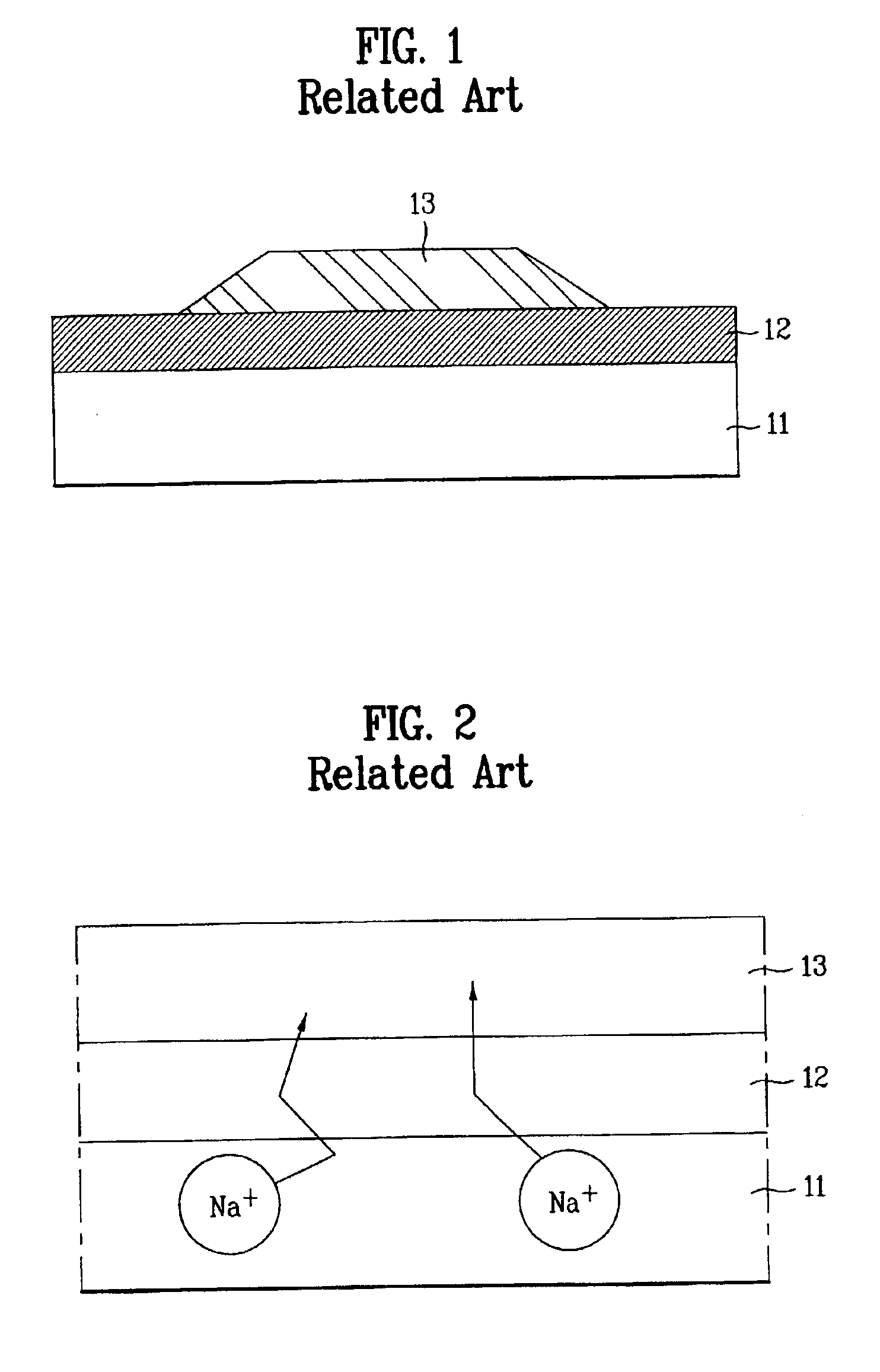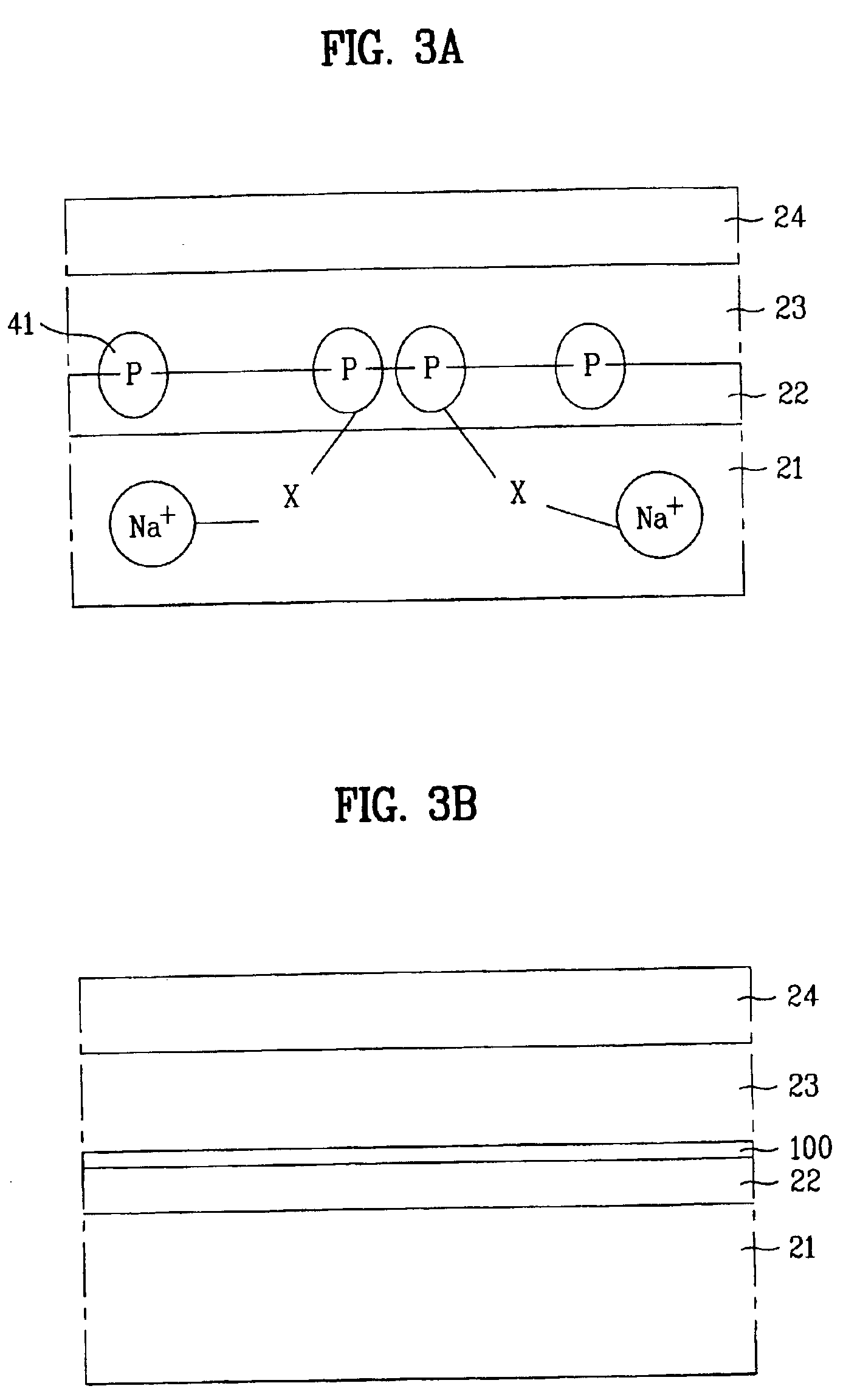Thin film transistor array substrate and method for manufacturing the same
a technology substrates, which is applied in the direction of transistors, optics, instruments, etc., can solve the problems of a burden on the deterioration of thin film transistors, and the cost of manufacturing materials such as substrates
- Summary
- Abstract
- Description
- Claims
- Application Information
AI Technical Summary
Benefits of technology
Problems solved by technology
Method used
Image
Examples
third embodiment
[0052]FIG. 5 is a cross-sectional view schematically illustrating a method for manufacturing a thin film transistor array substrate according to the present invention. The method for manufacturing the thin film transistor array substrate may include the process steps of forming a first buffer layer 520 on a substrate 510 formed of Low End Glass, forming a second buffer layer 530 on the first buffer layer 520, doping an impurity such as phosphorus or chlorine ions on the second buffer layer 530, and forming a pixel electrode (not shown) and a thin film transistor (not shown) having a semiconductor layer 540 on the second buffer layer 530.
[0053]As mentioned above, in the case of doping the phosphorus or chlorine ions after forming the first and second buffer layers 520 and 530, the phosphorous or chlorine ions may distribute throughout the first and second buffer layers 520 and 530 with a Gaussian profile. Accordingly, if the impurity doping process is performed such that the peak of ...
fourth embodiment
[0055]FIG. 6 is a cross-sectional view schematically illustrating a method for manufacturing a thin film transistor array substrate according to the present invention. The method for manufacturing the thin film transistor array substrate includes the process steps of forming a first buffer layer 620 on a substrate 610 formed of Low End Glass, forming an reactive layer 630 on an upper surface of the first buffer layer 620 for preventing mobile ions such as Na and K from moving by performing a plasma treatment using a plasma gas such as phosphorous or chlorine on the upper surface of the first buffer layer 620, forming a second buffer layer 640 on the reactive layer 630, and forming a pixel electrode (not shown) and a thin film transistor (not shown) having a semiconductor layer 650 on the second buffer layer 640.
[0056]When performing the plasma treatment in the upper surface of the first buffer layer 620, the plasma gas including the phosphorous or chlorine penetrates into the first ...
fifth embodiment
[0057]FIG. 7 is a cross-sectional view schematically illustrating a method for manufacturing a thin film transistor array substrate according to the present invention. The method for manufacturing the thin film transistor array substrate may include the process steps of forming a buffer layer 720 on a substrate 710 formed of Low End Glass, doping an impurity such as phosphorous or chlorine ions on the buffer layer 720, and forming a pixel electrode (not shown) and a thin film transistor (not shown) having a semiconductor layer 730 on the buffer layer 720.
[0058]As mentioned above, in case of doping the phosphorous or chlorine ions after forming the buffer layer 720 on the substrate 710, the phosphorous or chlorine ions may distribute throughout the substrate 710 and the buffer layer 720 in a Gaussian profile. Accordingly, if the impurity doping process is performed such that the peak of Gaussian profile is positioned in an interface between the substrate 710 and the buffer layer 720,...
PUM
| Property | Measurement | Unit |
|---|---|---|
| temperature | aaaaa | aaaaa |
| temperature | aaaaa | aaaaa |
| weight | aaaaa | aaaaa |
Abstract
Description
Claims
Application Information
 Login to View More
Login to View More - R&D
- Intellectual Property
- Life Sciences
- Materials
- Tech Scout
- Unparalleled Data Quality
- Higher Quality Content
- 60% Fewer Hallucinations
Browse by: Latest US Patents, China's latest patents, Technical Efficacy Thesaurus, Application Domain, Technology Topic, Popular Technical Reports.
© 2025 PatSnap. All rights reserved.Legal|Privacy policy|Modern Slavery Act Transparency Statement|Sitemap|About US| Contact US: help@patsnap.com



